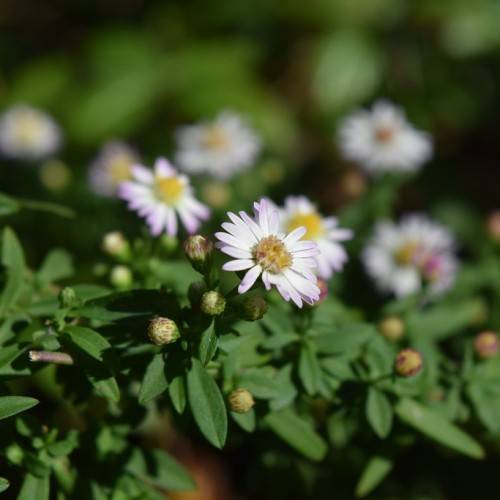
white woodland aster
Symphyotrichum lateriflorum
Cycle:
Herbaceous Perennial
Watering:
Average
Hardiness Zone:
4 - 8
Flowers:
Flowers In Autumn
Sun:
Full sun
Soil:
Well-drained
Fruits:
Fruits In Autumn Ready In Fall
Leaf:
Yes
Growth Rate:
High
Maintenance:
Low
Drought Tolerant:
Yes
Care Level:
Medium
watering
White woodland aster typically prefers light, moist soil. Water regularly once or twice a week, allowing the soil to dry out slightly between waterings. When watering, keep the water at the base of the plant rather than watering from overhead. Water thoroughly once per week in the summer and every other week in the winter.
sunlight
White woodland aster plants prefer partial to full sunlight. They should be placed in areas that receive 5 to 7 hours of direct sunlight each day for optimal growth. In the warmer months of the year, these plants require full sun for most of the day, with indirect light in the peak of the midday for afternoon shade. During the cooler months, they prefer light shade in the mornings and direct sunlight to thrive in the afternoons.
pruning
White woodland aster should be pruned in late winter or early spring before new growth begins. Pruning should only be done when the plant is dormant and all of its leaves have dropped. This pruning should only remove any dead wood or stems that are growing in the wrong direction. If necessary, lightly prune the center of the plant to remove any excess stems, but try not to reduce the size of the plant too drastically. Prune the stems right above a node and the remaining stem should be cut slightly in an angle. This pruning encourages air circulation and new plant growth.
